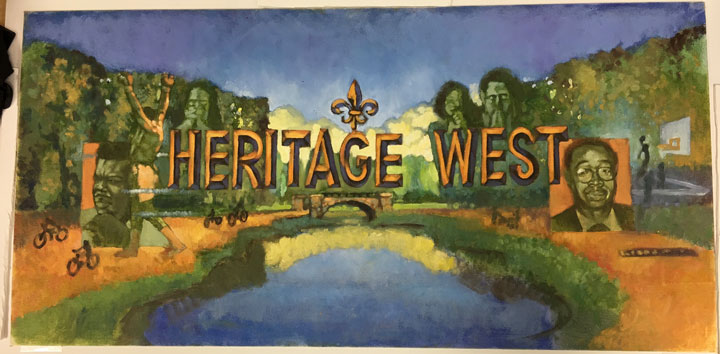On June 19 at Louisville Central Community Centers, the West Louisville Community Council along with Louisville Metro government's Louisville Forward division hosted a community event that facilitated four development proposals for Heritage West, formerly known as the Louisville FoodPort site stretching from 30th Street and Muhammad Ali Boulevard to 31st and Market Streets.
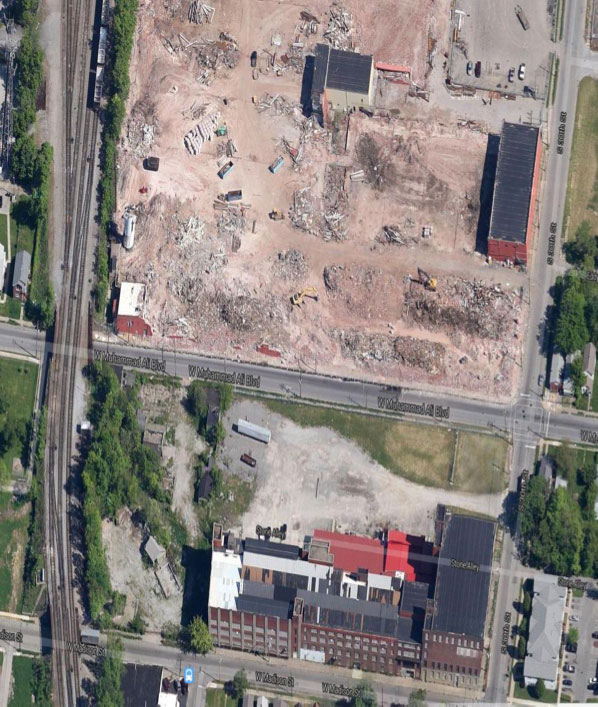
I went to the June 19th event as a late arrival, but I’ve made myself aware of the unfolding timeline of this project, covered the preparatory events and have reviewed every presentation and video from the four groups who presented proposals.
A track and field facility, a research park, a food coop, and a development dubbed Heritage Gardens have been proposed for the vacant, former proposed FoodPort site, renamed by the West Louisville Community Council as “Heritage West,” in the Russell neighborhood in western Louisville.
There was a multi-point agenda for the program. Louisville Forward has sought to develop a community-driven vision, establish a timeline for future steps, allow the four developer groups to make their presentations and have a feedback exercise.
This meeting was a culmination of a series of community events with dialogue and feedback facilitated by the WLCC over the last several months. From these meetings, West Louisvillians expressed an interest in jobs, small business development and improved spaces through the development of the local environment and public spaces.
More specifically, the top ten ideas that came from these planning sessions were:
- a recreation and/or sports center
- Black and locally-owned small business
- an adult vocational training program
- youth vocational training
- entertainment center
- biotech research facility
- a farmer’s market/cooperative urban farm
- sit-down “upscale” restaurant(s)
- parks/green space
- Veterans’ hospital built in West Louisville
After an introduction by WLCC chair Ramona Lindsey, Theresa Zawacki of Louisville Forward had a brief slide presentation describing the city organizational goals with the proposals. From there, it got started.
Sadiqa Reynolds, CEO of the Louisville Urban League, was first with a proposal for a state-of-the-art indoor track and field facility, capable of seating at least 4,000 people and facilitating other sporting events. This sports complex would also include an outside multi-use field, retail micro-business and vendor space, space for restaurants, cafés and kiosks, room for future hotel space and parking.
Reynolds estimated project cost at $30 million, to be financed with an issue of bonds that would allow the project to be moved ahead more quickly. Philanthropy and naming rights would also be means of initial funding. This sports complex would be self-sustaining from the revenue that could be had through having a world-class facility that the NCAA, AAU, NAIA and various sports bodies on the high school, college and even professional level that would seek to book the facility for events.
This Urban League project has gathered a significant number of professionals throughout the city as well as a number of West Louisville thought-leaders and businesspeople. Ms. Reynolds is a proponent of creating an economic engine and civic rallying point through sports, and the development of such a project at the Heritage West site can have a catalyst effect of drawing other economic activity in the space and region.
In this presentation, Reynolds said that this project would take 18-24 months to complete and would be open for business and events by 2020.
The largest, most ambitious proposal for the Heritage West space came next, a plan for a global biotechnology research park, presented by Matthew Harrell, developer.
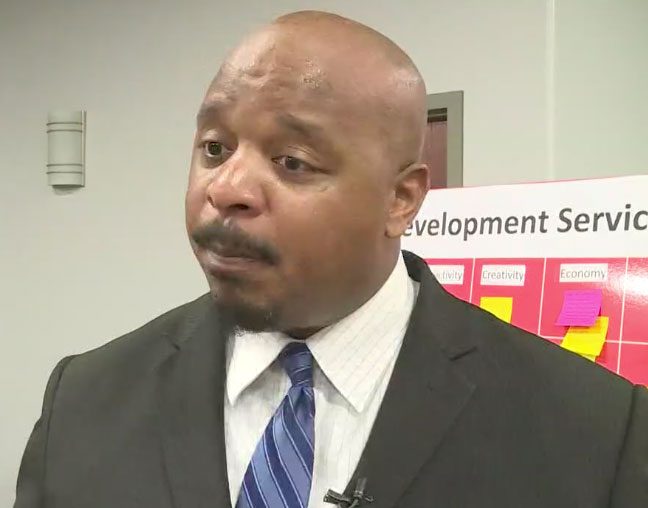
“Biotechnology,” as Harrell stated in his presentation, “is the blending of biology and technology to increase or improve products and processes.” They want West Louisville to become a hub and economic engine. This group immediately seeks to bring 200 jobs to West Louisville, with an intention to deliver 200 more via the redevelopment of a surrounding two block ring around what would be the biotechnology park.
This is particularly a compelling and ambitious idea, because I see that this project is more than a research park, it is a jobs and community rehabilitation project that bolts on a research park and green space component. Harrell made multiple bold declarations. Among them was the raising of the average income of West Louisville residents from $12,500 a year to $45,000-$60,000 a year. That is a breathtaking declaration on its face. It is so breathtaking that it makes me instantly skeptical and it demands a harder look at how it could be so. That would have to be a result of 1) providing existing community residents the means to have good-paying jobs that would significantly increase their salaries. That is, providing people who are unemployed or underemployed the means to have a staff-based service job that would provide something considerably above a living wage, and 2) the influx of six-figure, highly technical jobs by professionals, engineers and researchers who will not come from West Louisville, but literally around the world to provide the intellectual expertise to have such an industry as biotech and innovate. At least some of these professionals would have to somehow be compelled to repatriate to West Louisville, perhaps in the new housing that this project desires to build around the Heritage West campus.
It is also understood that a development project looks to articulate a vision of possibility that imagines beyond existing circumstances to create transformed places and spaces. I am entirely convinced that the land on those 24 acres can be transformed—concrete can be razed, decades of contaminated soil can be extracted from the ground and replaced with 1-2 feet of fresh topsoil, green spaces can be built and even academic institutions and biotechnology firms might be encouraged to venture west. The devil in the details comes in how the fates of the people still living in and around this project will be affected and how they can materially benefit from this process.
While I recognize that West Louisville population loss over the last 3-4 decades was due to factors such as Black suburban flight and the aging-out passing away of Black West Louisville homeowners who were born before and during the Depression-era generation who migrated to Louisville as part of the Great Migration…as Louisville is growing demographically, the neighborhoods of West Louisville will experience levels of repatriation and yes—gentrification, because the population growth demands it. However, there are populations of left-behind people, in employment, in education, in access to opportunity and life-chances, that must be addressed and helped, and dislocating them from where they are to move them to another place in the city is not a solution for the people. There is not going to be any one initiative, whether public or private, that can heal poor, afflicted, marginalized people in what has been marginalized communities…but every such public or private initiative that takes place must at least take a step to address it.
This is key. Presented was a considerable projection of ambition, but the means to make it so and to have this project pay for itself…is lacking.
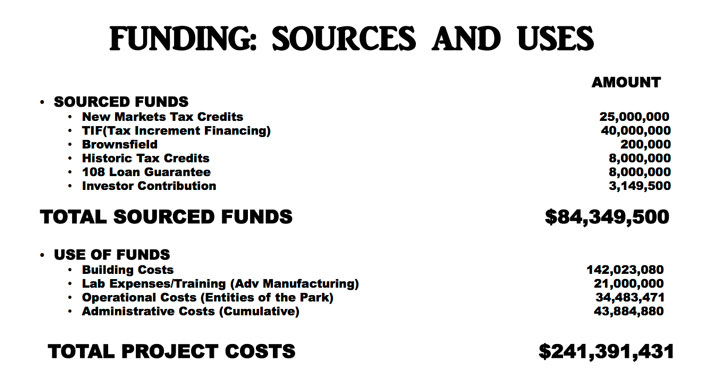
Another troubling element is the financing. In West Louisville, there have been far less ambitious, yet considerable, projects with a far smaller sticker price that was unable to be properly capitalized. So even if this group believes it can gather $73 million of financing through multiple tax credits: via Historic Tax Credits ($8 million), New Markets Tax Credits ($25 million) and TIFs (tax increment financing, to the tune of $40 million), that’s an incredible amount of leverage against a very tiny amount of real capitalization (about $3.15 million from investors). Moreover, that is only a proposed down payment to start construction on a project that would total over $240 million.
A Short History of West Louisville Development, or the Unfortunate Lack Thereof
Let’s examine a thumbnail history of large West Louisville development over the last 20 years. The construction of the Kentucky Center of African-American Heritage, originally slated to be the Kentucky African American Heritage Museum, had to alter its focus after it fell short of its goals of $25 million of capitalization. The Bridgewaters’ family, owners of TMG (The Mardrian Group) wanted to originally develop a $40 million project of apartments and businesses on what will now be the Passport location on 18th and Broadway, but they could not gather the capitalization. Seed Capital Kentucky wanted to pull together $30 million to develop a FoodPort, a food processing and manufacturing hub, but partners and capitalization fell through…but this project can gather $241+ million? Color me extraordinarily skeptical. I would love to such economic activity flow into and through the economy of West Louisville in real ways, but the existing partners are in financing and land development, with promises from the University of Louisville and Jefferson Community and Technical College to have satellite campuses at the site. To date, there has not yet been a commitment from interested biotechnology firms that would come to Louisville for this. Yes…if you build it, they will come a particular 1980s movie once said. The various tax incentives could be attractive enticements. However, readiness and education are also critical, and this loops back into the very challenges that the communities of West Louisville have, the lack of wealth, the relative lack of education, and poverty.
I very much liked the presentations of the other groups. The third presentation was by Cassia Herron, an urban planner who has been working on a Louisville Food Cooperative (and in disclosure, I have worked with and am still a part of this organizational process, if not as direct over the last six months) along with a group representing a Heritage Gardens proposal, where the 24 acres would be transformed into an industrial and agricultural center, have a farmer’s market and community grocery, provide retail and mixed use, have green spaces with an orchard and play areas and parking.
I have lumped these last two talks and projects together not because they’re inconsequential, they are not. As a matter of fact, these proposals actually provide the most opportunity for community development and engagement, in a positive way, of the people that live in and around the Heritage West location in particular and West Louisville in general.
The proposed campus for the Heritage Gardens project, represented by Denise Raine, would be the most aesthetically beautiful, with spaces and places for walkability, sustainability and productive community engagement. A food cooperative in West Louisville would address a critical need through having a locally-owned, strongly Black-influenced project in West Louisville that would provide a value-added benefit…however the challenge that both of these projects have is that they have not as of yet assembled the critical financing necessary to move forward significantly and begin building. The Heritage Gardens project is still gathering partners and has virtually no assembled funding. The Food Co-op, however, is not looking to develop the entire Heritage West campus. They are focused on finding a working location and gathering the capital to move forward. A plus that they have with their model is that it is non-traditional primarily through providing resident and local ownership. It also will require the smallest amount of capitalization to get started and supported.
After the presentation of the proposals, the community feedback, and the four groups’ responses to community questions (include links), my thoughts on the matter are:
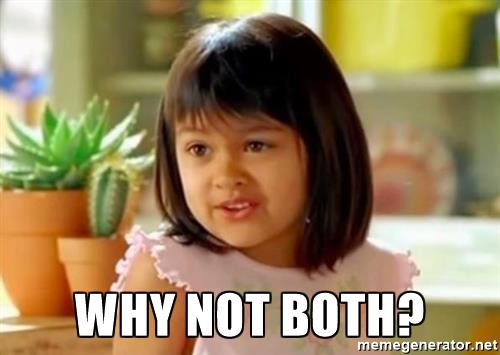
Why not all?
I like the proposal of the Biotechnology Park, however I believe the best elements of those projects could be served in other West Louisville locations. For example, I believe some of the industries of the biotech proposal could be served within the yet-unused development space in the Old Walnut Street building of Louisville Central Community Centers—as they have moved into a more modernized focus in improving their digital infrastructure, having university partners in training and housing such research and development in and around LCCC would be a prime area for commercial growth, particularly with the upcoming Russell Neighborhood redevelopment that is surely coming.
Partnerships should and could be made with JCPS with Central and Shawnee high schools along with the proposed DuBois school for African American boys, there should be direct pipelines of outreach, training and targeted education for careers and entrepreneurship opportunities in the fields of STEM. I consider it critical that the students of these schools receive targeted outreach and specialized education with this work. Real opportunities can be presented in boosting the education and opportunity-access statistics for the existing citizens in West Louisville with such a strategy pivot. It in no way would provide a short-term fix, but it would be a 10-15 year path of community development that would bear healthy fruit in and over time.
The proposed Louisville Urban League athletic complex and outdoor fields will generate the largest consensus of civic activity and local pride, and a world-class small to medium-sized sports facility in a sports-crazed city will have the most immediate and ongoing return for investor profitability through its ability to book events and be in constant use.
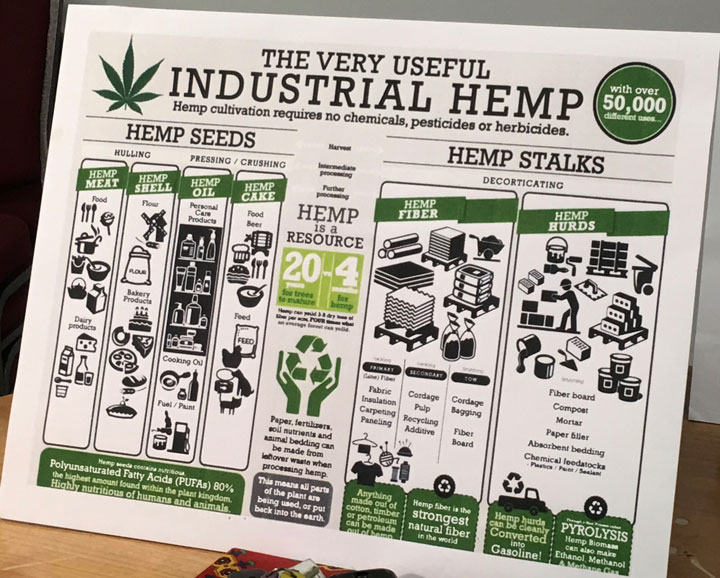
I also strongly believe there is a place for both a Farmer’s Market, Community Grocery (in this case, the Louisville Food Coop) and even the Industrial Hemp Agricultural center in and around the Heritage West campus. There are warehouses on the Muhammad Ali side of the street across from the 24 acre Heritage West campus that I believe would present an ideal location for an industrial hemp agricultural center, and perhaps food hub and processing companies on that smaller, yet significant space as a green industrial park as well. The Louisville Food Coop group could be housed, should be on the campus as a part of, and be tracked to gain the necessary financing through…
…being a part of a campus with a state-of-the-art indoor track and field facility that could house additional sporting events that can seat 4,000-7,000 people. The Louisville Food Co-op could be one of the prime partners of the retail space. The, relatively speaking, modest $1.26 million of equity that LFC seeks to move forward would be a relative drop-in-the-bucket of the total costs it shall take to “un-brownfield” Heritage West and prepare it for commercial use.
The financing via bond issue that the Louisville Urban League seeks could perhaps be increased to accommodate the Louisville Food Co-op (LFC) having a location at Heritage West as well as provide financial incentives for the Heritage Gardens team to have capitalization and attract partners for the Hemp Agricultural Center. Another $5-8 million dollars to the project would be more than enough to secure the needs of LFC and the amenities that Heritage Gardens seeks to contribute.
As Land Development Services wishes to embrace a massively ambitious project, could they not, along with their partners, be slated to receive the contracts to repair the existing homes of and build new housing on the two blocks surrounding the Heritage West campus?
At the end, it is critical that West Louisville communities, West Louisville-based businesses and nonprofits and citizens of West Louisville be able to receive some level of direct benefit that can and will improve their lives as well as rehabilitate and redevelop the blighted places and spaces in West Louisville neighborhoods. This is a pregnant moment for a massive influx of capital in our neighborhoods. It should not be squandered.

